Information about the background of the events recounted in The Madness of Captain Mills will appear on this page together with a selection of images.
Banner image: The Emigrants (from The Musical Supplement of The Illustrated London News, 19 June 1850)
Banner image: The Emigrants (from The Musical Supplement of The Illustrated London News, 19 June 1850)
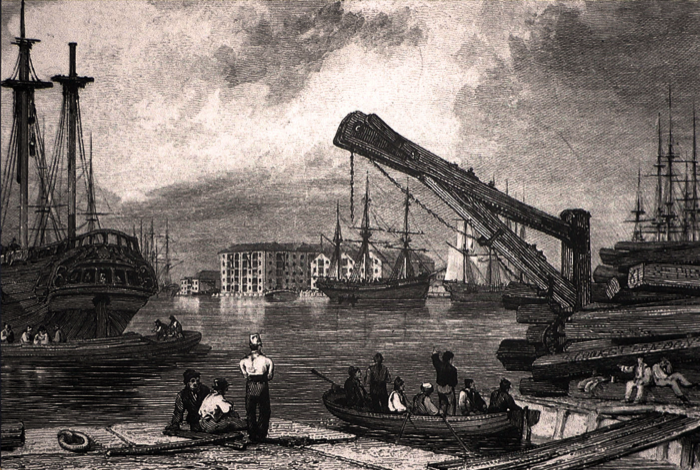
Commercial Dock, Rotherhithe, 1827 (George Cook 1793-1849)
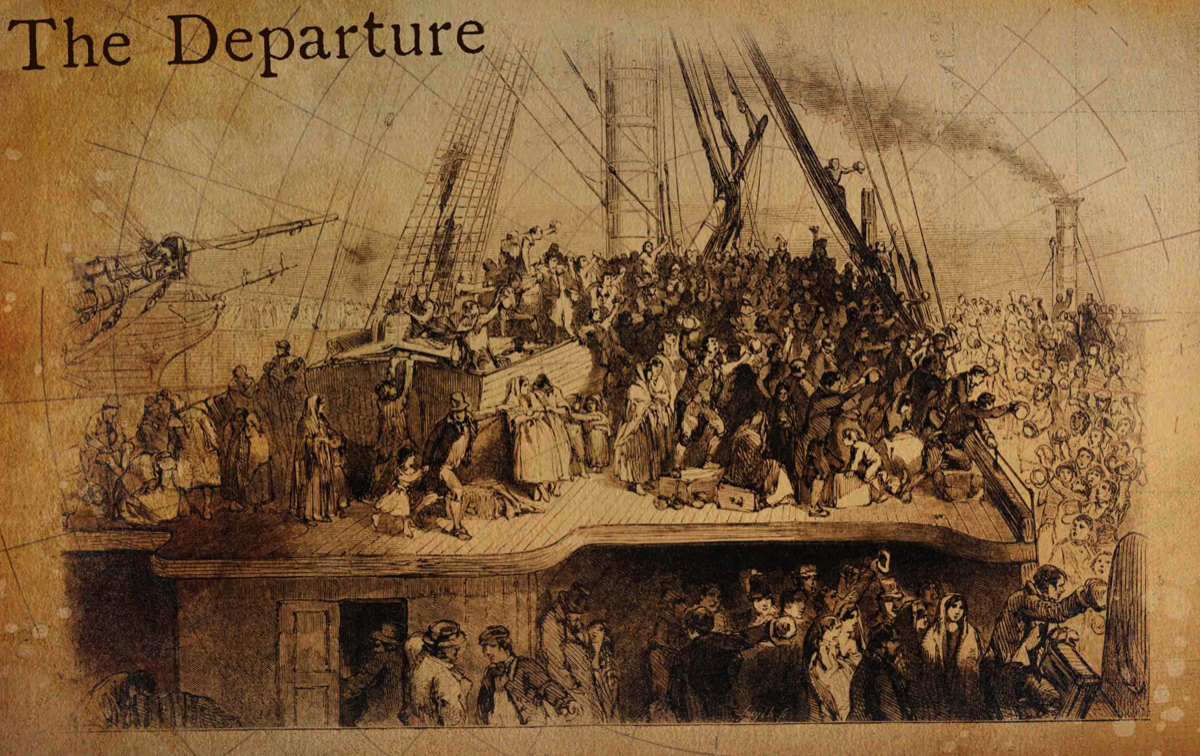
The Departure, Illustrated London News, 6 July 1850
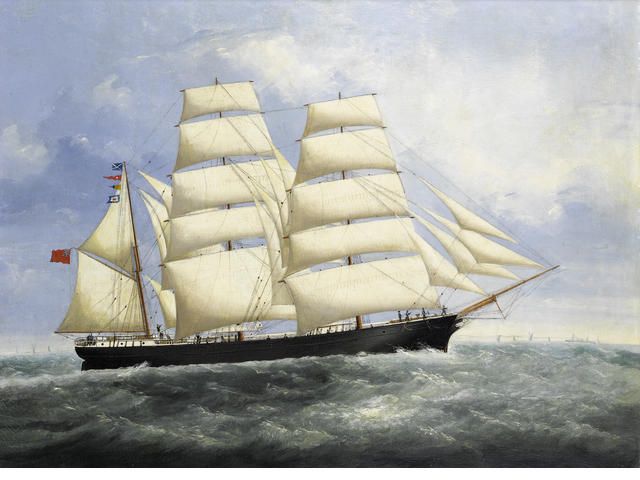
The Beaulah
John Powell Mills served as Chief Mate for only one month in 1842.
John Powell Mills served as Chief Mate for only one month in 1842.
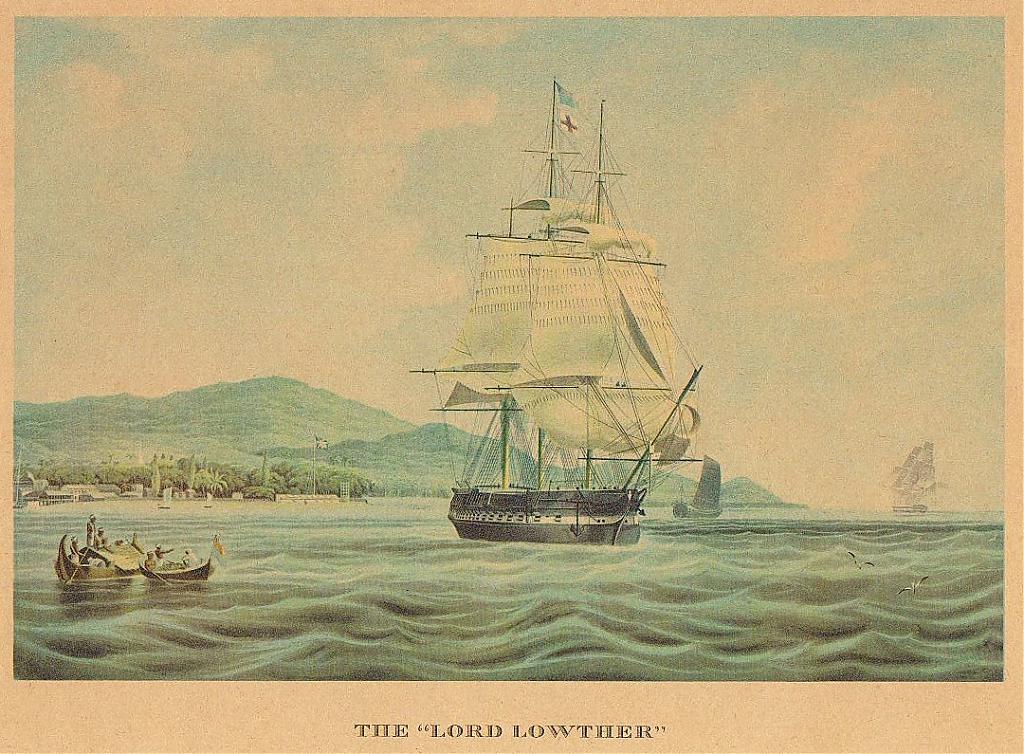
The Lord Lowther
John Powell Mills served as Chief Mate later in 1842 to 1843, voyaging to China and India.
John Powell Mills served as Chief Mate later in 1842 to 1843, voyaging to China and India.
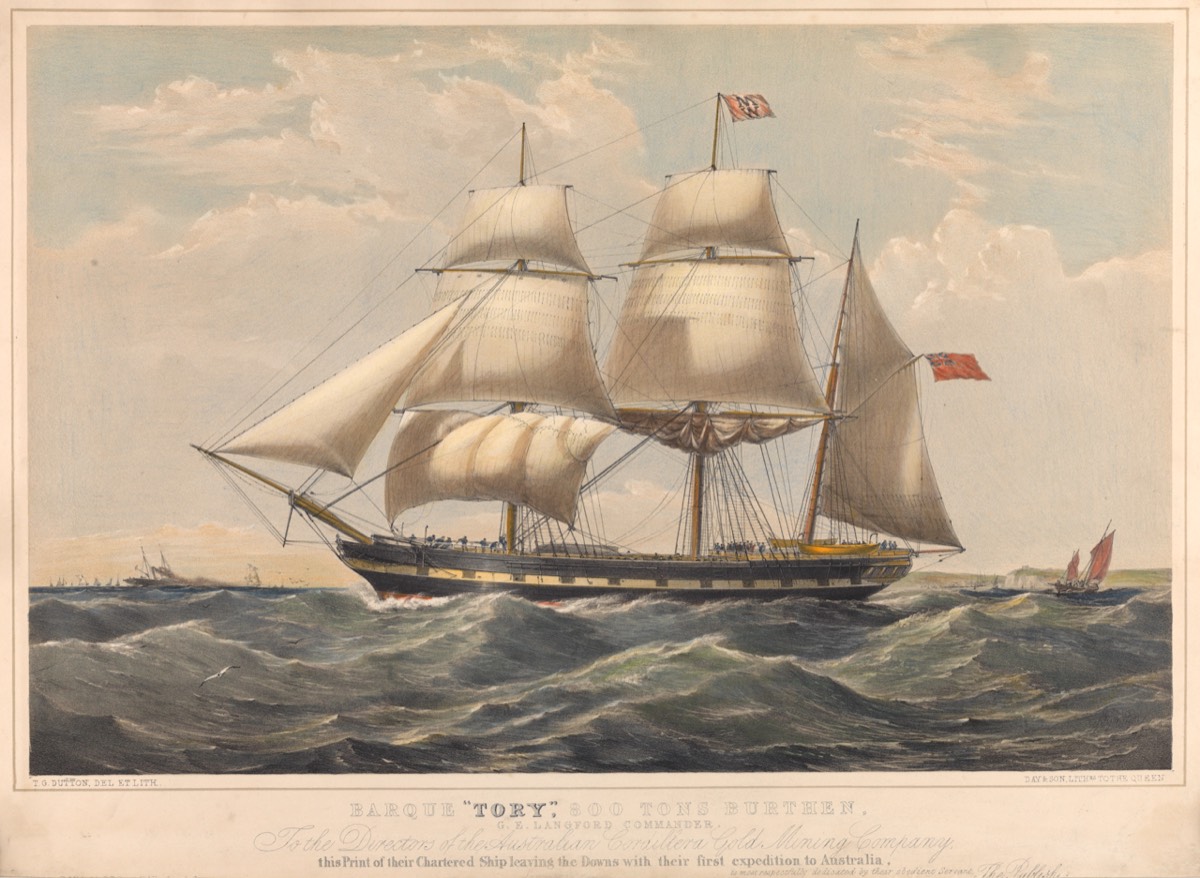
The Tory
John Powell Mills was Master (Captain) from 1845 to 1846 voyaging to the Colonies and Calcutta.
John Powell Mills was Master (Captain) from 1845 to 1846 voyaging to the Colonies and Calcutta.
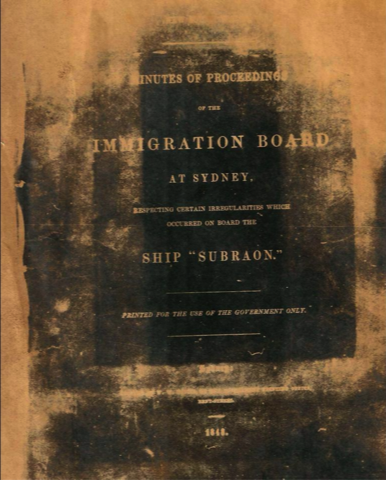
The cover to the 1848 inquiry into the voyage of the Subraon
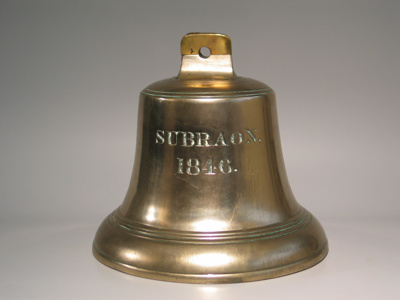
Ship's bell from the Subraon. Recovered in 1969 from the site of the 1848 wreck in Wellington Harbour.
Now in the Wellington Museum.
Now in the Wellington Museum.
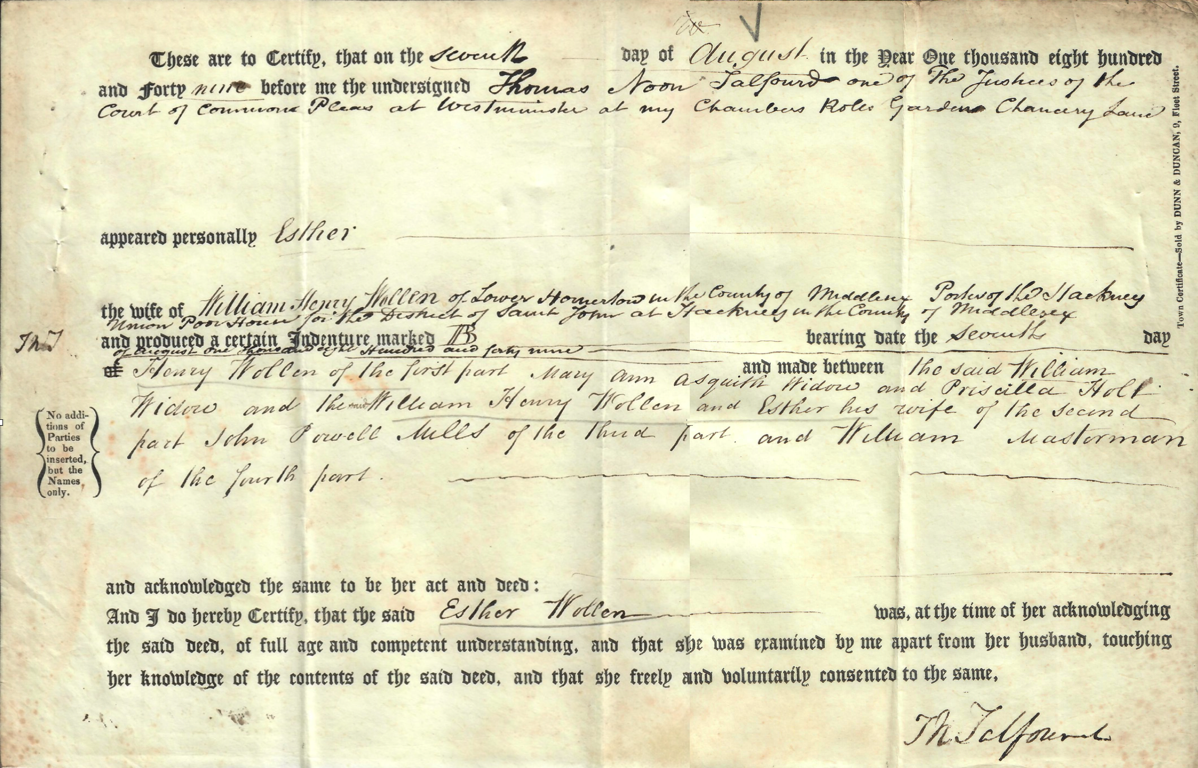
On 7 August 1849 John Powell Mills and his brother-in-law
William Masterman witnessed this Deed of Acknowledgement.
Charles Dickens dedicated Pickwick Papers to Thomas Noon Talford (1795-1854) who created and signed this document.
William Masterman witnessed this Deed of Acknowledgement.
Charles Dickens dedicated Pickwick Papers to Thomas Noon Talford (1795-1854) who created and signed this document.
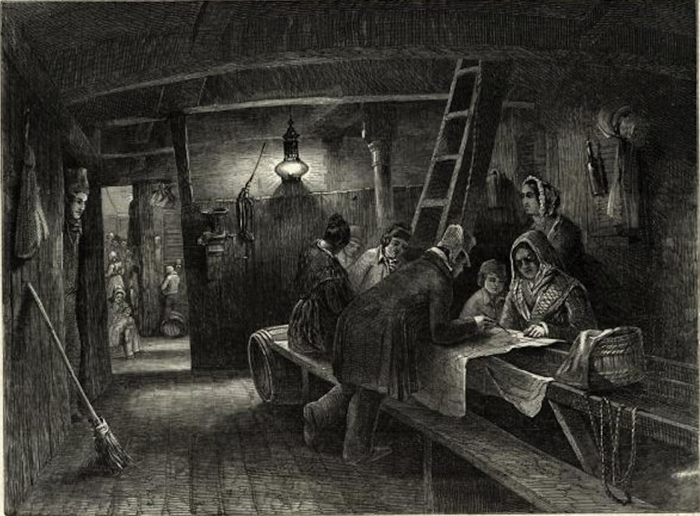
Emigrants on board ship trace their journey.
From an 1849 copy of the Illustrated London News.
An image which inspired a scene in The Madness of Captain Mills.
From an 1849 copy of the Illustrated London News.
An image which inspired a scene in The Madness of Captain Mills.
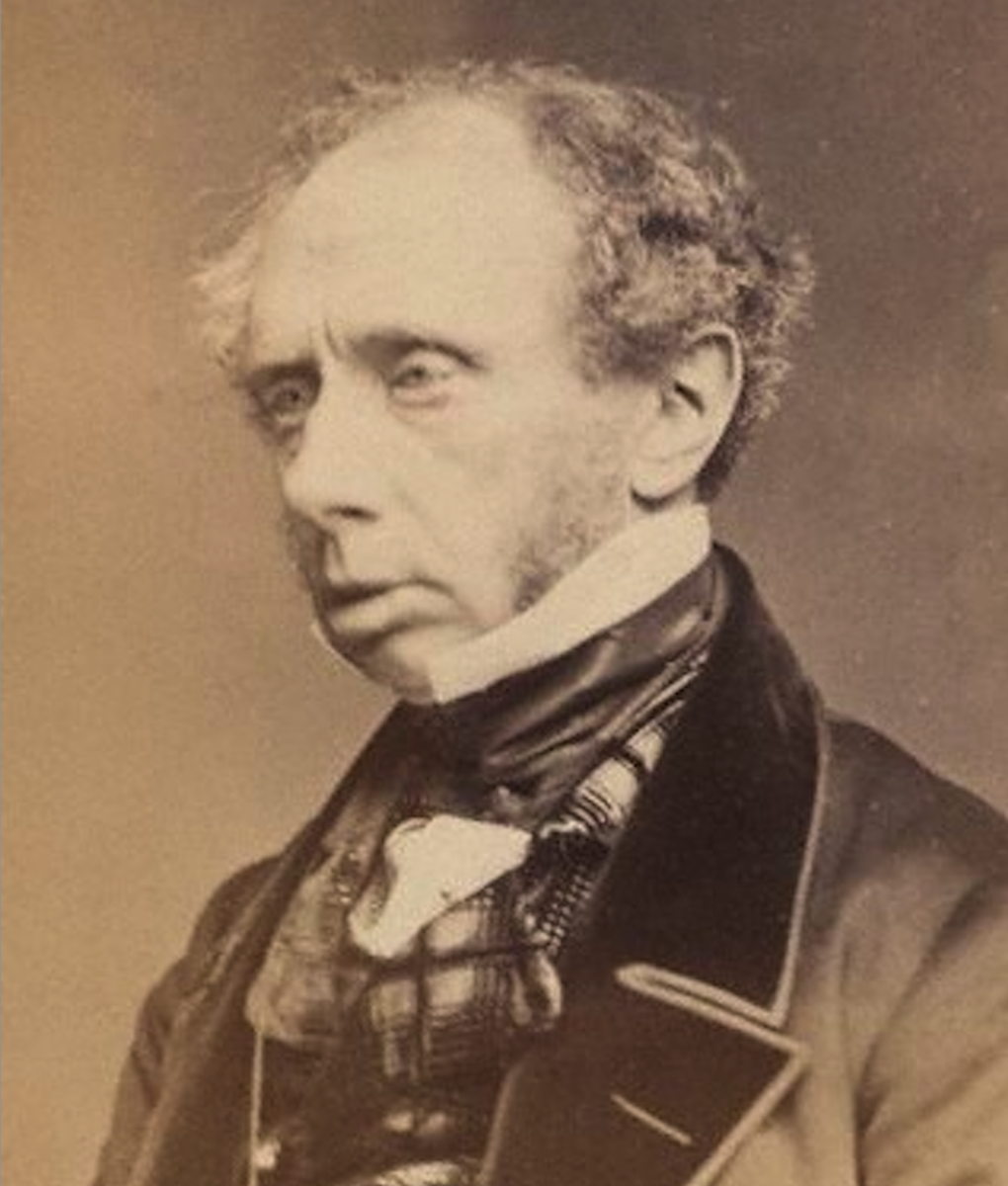
Henry George Grey, 3rd Earl Grey (1809-1894)
He devised an Assisted Emigration Scheme which lasted from 1848 to 1850 to convey impoverished Irish emigrants to Australia. Earl Grey tea is named after his father, Charles, the 2nd Earl Grey.
He devised an Assisted Emigration Scheme which lasted from 1848 to 1850 to convey impoverished Irish emigrants to Australia. Earl Grey tea is named after his father, Charles, the 2nd Earl Grey.
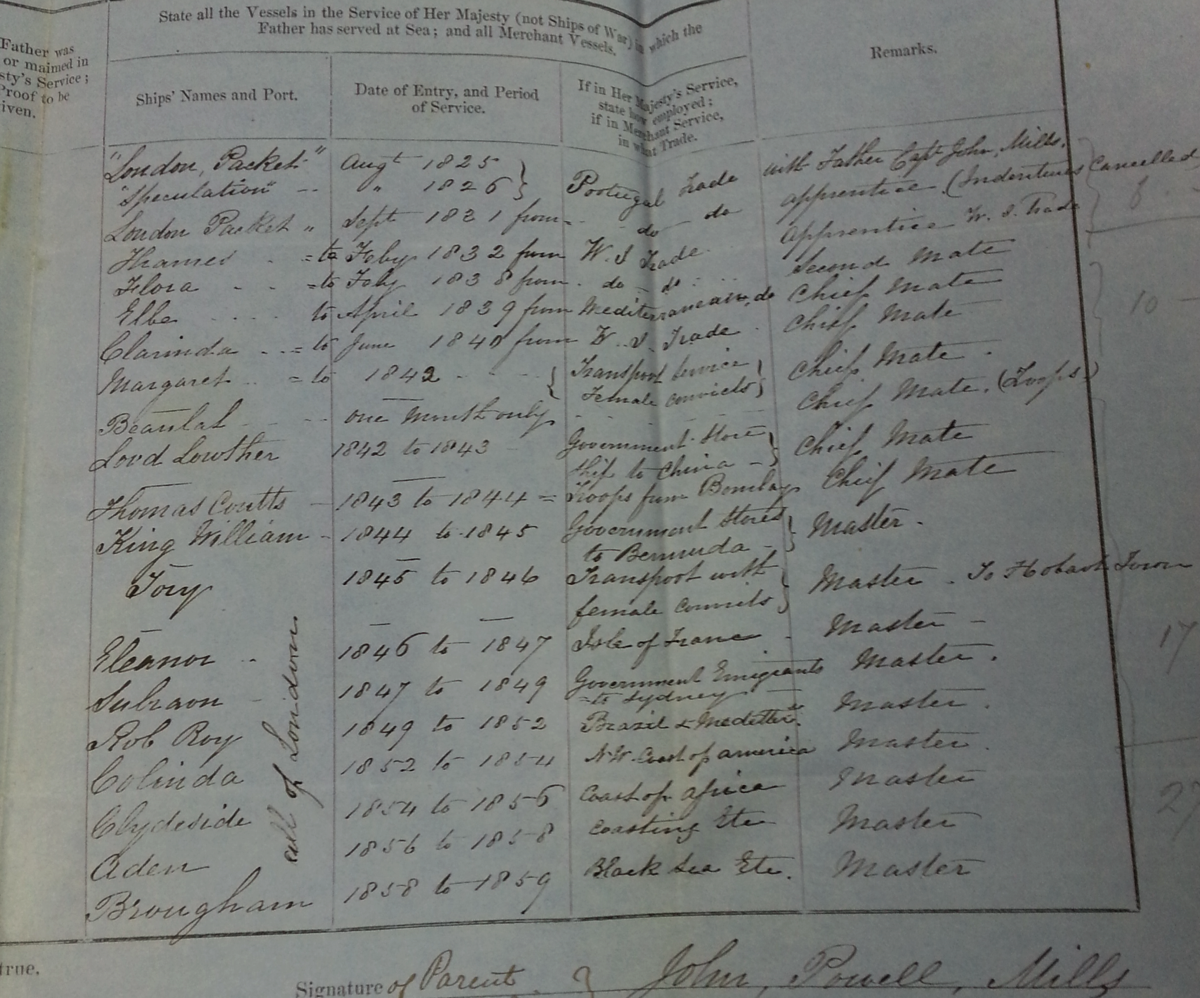
Part of a document from 1862 held at the National Archives in Kew. John Powell Mills applied for one of his sons to be accepted into the Royal Hospital School, Greenwich in order to enter the Merchant Navy. The document lists all the ships that Mills had sailed on, and shows that after the disastrous voyage of the Colinda, he captained three more ships.
